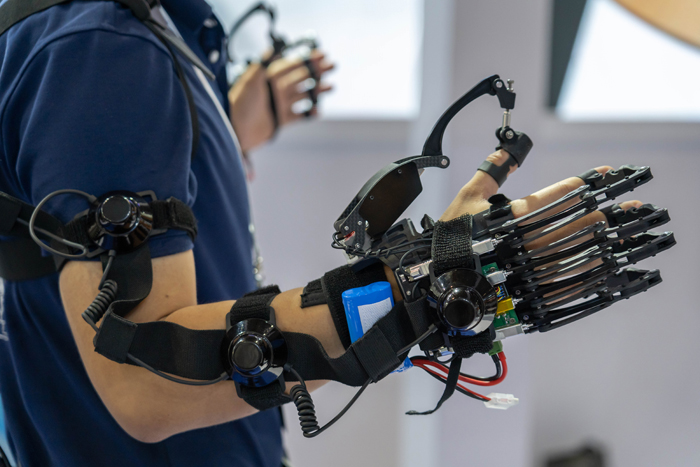In the ever-evolving landscape of workplace safety and productivity, wearable ergonomic sensors have emerged as a game-changer. These innovative devices, seamlessly integrated into work attire, are revolutionizing the way we approach physical ergonomics, providing real-time data on posture, movement, and potential risk factors. By leveraging the power of wearable sensors, employers can create safer, more efficient work environments that prioritize employee well-being and operational excellence. In this article, we will explore the benefits, applications, and future of wearable ergonomic sensors in the workplace.
The Benefits of Wearable Ergonomic Sensors:
Wearable ergonomic sensors offer a range of benefits that can significantly improve workplace safety and productivity:
- Injury Prevention: By continuously monitoring employee movements and posture, wearable sensors can detect potential risk factors and provide real-time feedback to prevent musculoskeletal disorders (MSDs) and other work-related injuries.
- Improved Productivity: With the ability to optimize work processes and reduce the risk of injuries, wearable ergonomic sensors can lead to increased productivity and efficiency in the workplace.
- Data-Driven Insights: These sensors collect valuable data on employee movements, posture, and environmental factors, providing employers with insights to make informed decisions about workplace design, job rotation, and training programs.
- Employee Engagement: By involving employees in the process of improving workplace ergonomics, wearable sensors can foster a culture of safety and engagement, leading to higher job satisfaction and reduced turnover.
Applications of Wearable Ergonomic Sensors:
Wearable ergonomic sensors have a wide range of applications in various industries, from manufacturing and construction to healthcare and office settings:
- Posture Monitoring: Sensors placed on the back, neck, and limbs can detect poor posture and provide real-time feedback to employees, encouraging them to maintain proper alignment and reduce the risk of MSDs.
- Movement Analysis: Wearable sensors can track employee movements, such as lifting, pushing, and pulling, and provide insights into the efficiency and safety of these tasks.
- Force Measurement: Some wearable sensors are equipped with force sensors that can measure the amount of force exerted by employees during tasks like tool operation or material handling.
- Environmental Monitoring: Wearable sensors can also monitor environmental factors such as temperature, humidity, and noise levels, helping employers identify and mitigate potential health and safety risks.
The Future of Wearable Ergonomic Sensors:
As wearable sensor technology continues to evolve, we can expect to see even more advanced and sophisticated applications in the realm of workplace ergonomics. Some potential future developments include:
- Integration with AI and Machine Learning: By combining wearable sensor data with artificial intelligence and machine learning algorithms, employers can gain even deeper insights into employee movements and potential risk factors, allowing for more targeted interventions and preventive measures.
- Personalized Ergonomic Solutions: As wearable sensors collect more data on individual employee movements and preferences, employers can tailor ergonomic solutions to each worker’s unique needs, improving comfort and reducing the risk of injuries.
- Seamless Integration with Workplace Systems: In the future, wearable ergonomic sensors may be able to integrate seamlessly with other workplace systems, such as building automation and human resources, creating a more holistic and efficient approach to workplace safety and productivity.
Conclusion:
Wearable ergonomic sensors are revolutionizing the way we approach workplace safety and productivity. By providing real-time data on employee movements, posture, and environmental factors, these innovative devices are helping employers create safer, more efficient work environments that prioritize employee well-being. As the technology continues to evolve, we can expect to see even more advanced and sophisticated applications of wearable ergonomic sensors in the workplace.
At the forefront of this revolution is dorsaVi, a company that is at the cutting edge of wearable sensor technology. Through their comprehensive suite of wearable devices and software solutions, dorsaVi is revolutionizing motion analysis and biomechanics, providing employers with the tools they need to create safer, more productive workplaces. By partnering with dorsaVi, employers can unlock the full potential of wearable ergonomic sensors and take their workplace safety and productivity to new heights.
Stay in touch to get more updates & news on Headlines !



